#The African Development Bank Group
Text
ADB $1 Billion Insurance Facility to Protect Millions of African Farmers
The African Development Bank Group has presented its planned $1 billion facility to provide insurance to more than 40 million farmers across the continent against the severe impacts of climate change.
The facility was widely praised by the World Food Programme (WFP), development agencies, insurance companies, and the private sector during a side event at COP28 in Dubai.
African Development Bank…
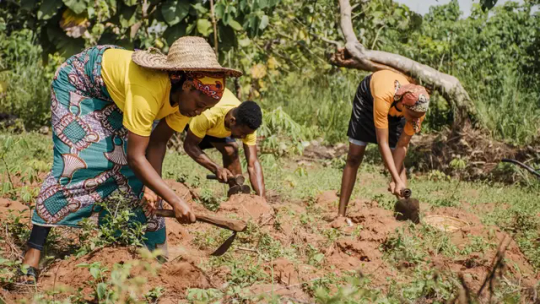
View On WordPress
0 notes
Text
The Promise of a Demographic Dividend (CPD57 Side Event).
Africa's youth population offers immense potential, with three-quarters under 35, creating a demographic dividend. Despite challenges like gender inequality and high fertility rates, family planning policies have begun to shape a positive demographic transition. National Demographic Dividend Observatories (NODDs) in seven countries are driving progress, producing vital data and tools for policymaking.
At this high-level session, the focus will be on recognizing NODDs' contributions, addressing challenges, and advocating for renewed commitment to harnessing the demographic dividend.
Related Sites and Documents
Concept Note
Watch The Promise of a Demographic Dividend (CPD57 Side Event)!
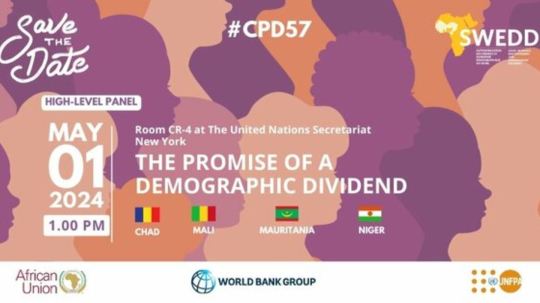
#Demographic transition#African youth#demographic dividend#population#cpd57#unfpa#commission on population and development#young people#side-events#african union#world bank group#demographics#icpd30#fertility rates#family planning policies#gender inequality
0 notes
Text
Promoting the Africa Circular Economy Facility (ACEF).
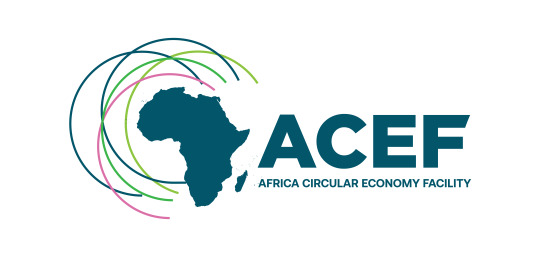
Ahead of World Environment Day 2023, the African Development Bank Group has been promoting its Africa Circular Economy Facility. The ACEF is a multi-donor grants facility that looks at mainstreaming the circular economy. It aims to help African nations fulfil their development priorities, while meeting the goals of the Paris Agreement the Sustainable Development Goals (SDGs) and the African Union's Agenda 2063. The ACEF aims to become the leading financier of the circular transition in Africa.
#circulareconomy#Agenda2063#circular transition#African Development Bank Group#Africa Circular Economy Facility (ACEF)#world environment day#environment
0 notes
Photo

European Nations by Corruption Perceptions Index(2023)
by Specific_Ad_685
Note :- Corruption Perceptions Index is a report released annually by Transparency International for generally Public Sector and Public Institutions based corruption.
It measures corruption on a scale of 0 to 100 with 0 meaning highly corrupt(basically fully corrupt) and 100 meaning no corruption and fully clean.
The CPI is calculated using 13 different data sources from 12 different institutions that capture perceptions of corruption within the past two years.
13 data sources were used to construct the Corruption Perceptions Index (CPI)
2023:
1. African Development Bank Country Policy and Institutional Assessment 2021
2. Bertelsmann Stiftung Sustainable Governance Indicators 2022
3. Bertelsmann Stiftung Transformation Index 2024
4. Economist Intelligence Unit Country Risk Service 2023
5. Freedom House Nations in Transit 2023
6. Global Insight Country Risk Ratings 2022
7. IMD World Competitiveness Center World Competitiveness Yearbook Executive Opinion Survey 2023
8. Political and Economic Risk Consultancy Asian Intelligence 2023
9. The PRS Group International Country Risk Guide 2023
10. World Bank Country Policy and Institutional Assessment 2022
11. World Economic Forum Executive Opinion Survey 2023
12. World Justice Project Rule of Law Index Expert Survey 2023
13. Varieties of Democracy (V-Dem v. 13) 2023
112 notes
·
View notes
Text
Happy International Women’s Day! Celebrating the impact of amazing women today, and every day. Here are just a few of the brilliant women we’ve been inspired by over the past 12 months. #IWD2024

After her daughter Brodie's death by suicide in 2020, Emma Webb launched a suicide prevention campaign. Brodie was a talented equestrian, which is what inspired @thewebstermwebb’s challenge pulling a life-size resin horse 160 miles from Chepstow to London.

Sarah Goldson has directed the @Wimbledon Ball Boy and Girl training since the 2012 Championships. The training helps develop life skills among young people, with 280 BBGs selected from local schools.

Vaitea Cowan is a co-founder of @Enapter, a company aiming to account for 10% of the world's green hydrogen by 2050. Enapter won the Fix Our Climate category at the 2021 Earthshot Prize and continues to thrive.

Bianca Sakol is the founder and CEO of @Sebbys_Corner, a shop-style baby bank which believes no child should go without the basic essentials they need to thrive. They provide a warm, welcoming environment and gives families choice and dignity to choose the items they need.

Mother and daughter, Jennifer and Emilia Clarke, were awarded MBEs for their brain injury charity work. They are co-founders of @SameYouOrg, a charity which develops better mental health recovery treatment for survivors and raises awareness around rehabilitation.

Dr. Gubby Ayida has been the CEO of @EvelinaLondon since May 2023 and oversaw its opening of the new Children’s Day Surgery Unit last year.

Wendy Simm was born and raised in Moss Side, Manchester and founded ‘Keeping It Real 24/7.’ The food bank focuses on delivering culturally important foods to those in need, such as yams and sweet potatoes, which generally are not provided by other food banks.

Captain Preet Chandi is a British Army Captain who holds three world records for polar trekking, most recently in December 2023 for becoming the world's fastest woman to complete a solo South Pole ski expedition.

Barbara Smith is a psychotherapist who has served over 16 years with @BritishRedCross, offering psychosocial support in disaster and war zones, aiding those in trauma.
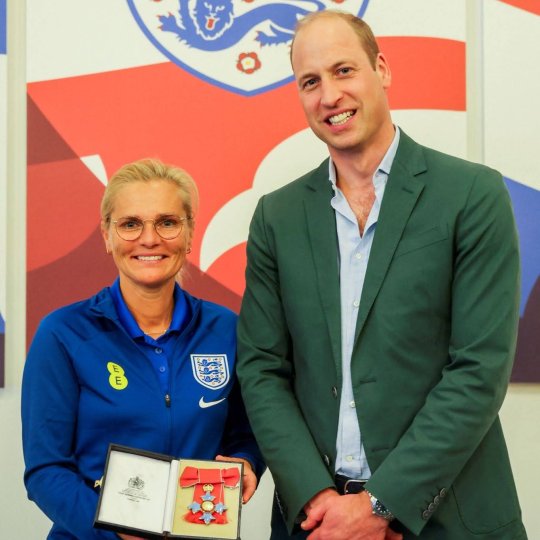
Sarina Weigman began her role as England Women’s Head Coach in September 2021, leading The @Lionesses to Euro 2022 victory. She was presented with an Honorary CBE in June last year.

Renee Salt is a Holocaust survivor who was born in Zdunska Wola, Poland in 1929. She survived both Auschwitz and Belsen, but her family did not. Renee has spoken to thousands of young people as part of @HolocaustUK's programmes.
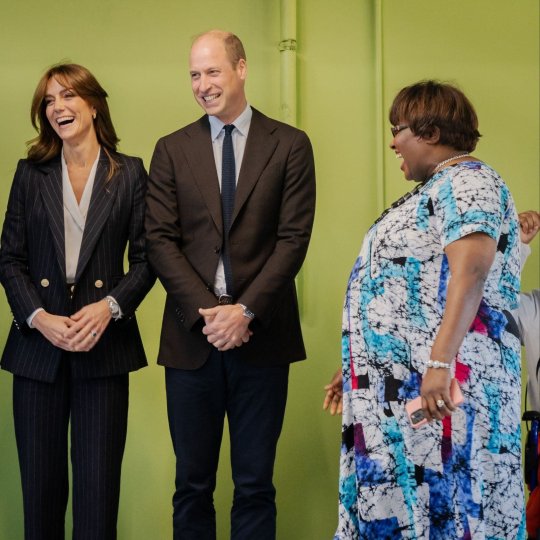
Professor Uzo Iwobi founded @rcccymru to boost art, heritage, and culture for minority groups in Wales. She empowers African Caribbean elders through learning initiatives and mentors young people to fulfil their aspirations.

In 2024, @hmsoardacious will be represented by Team Valkyrie, the first all-serving women's military team to row across the Atlantic. The @toughestrow challenge raises money for military charities and organisations that support veterans and their families.
- The Prince and Princess of Wales
#kensingtonroyal#international women's day 2024#prince of wales#princess of wales#kp twitter#kp tweets#8.03.2024#february24
32 notes
·
View notes
Text
We are Israel's largest human rights group [B’Tselem] – and we are calling this apartheid by Hagai El-Ad
One cannot live a single day in Israel-Palestine without the sense that this place is constantly being engineered to privilege one people, and one people only: the Jewish people. Yet half of those living between the Jordan River and the Mediterranean Sea are Palestinian. The chasm between these lived realities fills the air, bleeds, is everywhere on this land.
I am not simply referring to official statements spelling this out – and there are plenty, such as prime minister Benjamin Netanyahu’s assertion in 2019 that “Israel is not a state of all its citizens”, or the “nation state” basic law enshrining “the development of Jewish settlement as a national value”. What I am trying to get at is a deeper sense of people as desirable or undesirable, and an understanding about my country that I have been gradually exposed to since the day I was born in Haifa. Now, it is a realisation that can no longer be avoided.
Although there is demographic parity between the two peoples living here, life is managed so that only one half enjoy the vast majority of political power, land resources, rights, freedoms and protections. It is quite a feat to maintain such disfranchisement. Even more so, to successfully market it as a democracy (inside the “green line” – the 1949 armistice line), one to which a temporary occupation is attached. In fact, one government rules everyone and everything between the river and the sea, following the same organising principle everywhere under its control, working to advance and perpetuate the supremacy of one group of people – Jews – over another – Palestinians. This is apartheid.
There is not a single square inch in the territory Israel controls where a Palestinian and a Jew are equal. The only first-class people here are Jewish citizens such as myself, and we enjoy this status both inside the 1967 lines and beyond them, in the West Bank. Separated by the different personal statuses allotted to them, and by the many variations of inferiority Israel subjects them to, Palestinians living under Israel’s rule are united by all being unequal.
Unlike South African apartheid, the application of our version of it – apartheid 2.0, if you will – avoids certain kinds of ugliness. You won’t find “whites only” signs on benches. Here, “protecting the Jewish character” of a community – or of the state itself – is one of the thinly veiled euphemisms deployed to try to obscure the truth. Yet the essence is the same. That Israel’s definitions do not depend on skin colour make no material difference: it is the supremacist reality which is the heart of the matter – and which must be defeated.
Until the passage of the nation state law, the key lesson Israel seemed to have learned from how South Africa’s apartheid ended was to avoid too-explicit statements and laws. These can risk bringing about moral judgments – and eventually, heaven forbid, real consequences. Instead, the patient, quiet, and gradual accumulation of discriminatory practices tends to prevent repercussions from the international community, especially if one is willing to provide lip service to its norms and expectations.
This is how Jewish supremacy on both sides of the green line is accomplished and applied.
We demographically engineer the composition of the population by working to increase the number of Jews and limit the number of Palestinians. We allow for Jewish migration – with automatic citizenship – to anywhere Israel controls. For Palestinians, the opposite is true: they cannot acquire personal status anywhere Israel controls – even if their family is from here.
We engineer power through the allocation – or denial – of political rights. All Jewish citizens get to vote (and all Jews can become citizens), but less than a quarter of the Palestinians under Israel’s rule have citizenship and can thus vote. On 23 March, when Israelis go and vote for the fourth time in two years, it will not be a “celebration of democracy” – as elections are often referred to. Rather, it will be yet another day in which disfranchised Palestinians watch as their future is determined by others.
We engineer land control by expropriating huge swaths of Palestinian land, keeping it off-limits for their development – or using it to build Jewish towns, neighbourhoods, and settlements. Inside the green line, we have been doing this since the state was established in 1948. In East Jerusalem and the West Bank, we have been doing this since the occupation began in 1967. The result is that Palestinian communities – anywhere between the river and the sea – face a reality of demolitions, displacement, impoverishment and overcrowding, while the same land resources are allocated for new Jewish development.
And we engineer – or rather, restrict – Palestinians’ movement. The majority, who are neither citizens nor residents, depend on Israeli permits and checkpoints to travel in and between one area and another, as well as to travel internationally. For the two million in the Gaza Strip travel restrictions are the most severe – this is not just a Bantustan, as Israel has made it one of the largest open-air prisons on Earth.
Haifa, my birth city, was a binational reality of demographic parity until 1948. Of some 70,000 Palestinians living in Haifa before the Nakba, less than a 10th were left afterwards. Almost 73 years have passed since then, and now Israel-Palestine is a binational reality of demographic parity. I was born here. I want – I intend – to stay. But I want – I demand – to live in a very different future.
The past is one of traumas and injustices. In the present, yet more injustices are constantly reproduced. The future must be radically different – a rejection of supremacy, built on a commitment to justice and our shared humanity. Calling things by their proper name – apartheid – is not a moment of despair: rather, it is a moment of moral clarity, a step on a long walk inspired by hope. See the reality for what it is, name it without flinching – and help bring about the realisation of a just future.
#reaux speaks#resources#B’Tselem#israel#human rights#apartheid#south africa#palestine#the guardian#article#gaza#jewish#palestinian#anti zionism#zionism#free palestine
52 notes
·
View notes
Text
[VOA is US State Media]
A report by researchers from Johns Hopkins University is giving China better than expected marks for its performance in helping to restructure the crippling debt loads carried by some African countries.
The report is based on a detailed evaluation of Beijing's participation in the Debt Service Suspension Initiative, or DSSI, an international vehicle for developed nations to support struggling countries like Angola and Zambia.
The DSSI was introduced in 2020 at the start of the global pandemic by the International Monetary Fund and World Bank, which suggested the world’s 20 largest economies, known as the G-20, temporarily halt the collection of loans from the world’s poorest nations.
U.S. Treasury Secretary Janet Yellen and World Bank Chief David Malpass have recently accused China of being a barrier to debt relief, and U.S. Vice President Kamala Harris was in default-stricken Zambia last week urging the country's bilateral creditors — of which China is the biggest — to do more on restructuring Zambia’s debt.
But, despite some caveats, the report released this week by Deborah Brautigam and Yufan Huang from the China Africa Research Initiative found that overall, China “fulfilled its role fairly well as a responsible G-20 stakeholder.”
The analysts added that China “did implement the minimum steps of the DSSI fairly well, communicating with other players, and following through on pledges.”
According to the available data, Chinese creditors accounted for 30 percent of all claims and contributed 63 percent of debt service suspensions in the countries that participated in the DSSI.
“The metric by which you evaluate [China’s] performance depends on what your expectations were for the initiative,” Brautigam told VOA, noting that this was the first time the world’s second-largest economy had joined a multilateral initiative – a move one G-20 source called “miraculous.”
Brautigam said it was obvious that a new architecture is needed to deal with debt relief because the current system is dominated by the Paris Club, a group of wealthy Western nations that started lending to developing countries in 1956. In recent years, there have been more major new creditors, like China and bondholders.
“So what evolves out of this is really up in the air,” she said, adding that all lenders “need to be in together because otherwise you get all these suspicions, you know, worries about free riding.”
Successes and failures
The study concluded that China might have achieved more during the DSSI if not for fears that countries would simply take advantage of any debt relief to repay other creditors.
In Zambia, for example, Chinese creditors wanted assurances their relief wouldn’t be used to pay off the bondholders, while the bondholders were concerned that any relief from their side might go toward paying off China.
China was “totally justified” in its suspicions on this front, Brautigam said, because “in most countries, all of those creditors continued to be paid.”
“We need something that is simultaneous - you know, they all need to be in the room together … so that we don’t have this first-mover problem,” she added.
In Zambia, the Chinese decided against suspending their debt payments while the country was still paying bondholders, but this didn’t happen in Angola, China’s largest African borrower with around $20 billion in debt to Chinese entities. In that case, Chinese creditors provided 97% of the debt relief over the two-year period without asking for assurances that Angola wouldn’t continue making other repayments.
The researcher’s third African case study, Kenya, showed how China’s DSSI treatment was different from the other two. Chinese banks agreed to provide relief at first but later stopped loan disbursements and suspended only some 40 percent of the expected amount in 2021.
Moving forward
The study also showed how China's banks and central government, despite the country's top-down political structure, do not always act in unison. The fragmented nature of the Chinese system and bureaucratic hurdles often remain a barrier to debt relief.
Being part of the DSSI helped address that because it “pushed the Chinese government to align interests among fragmented banks and bureaucracies with conflicting goals. This process, still under way, is a necessary step toward full acceptance of the necessity for debt restructuring in the post-pandemic era,” the researchers found.
The DSSI ended in December 2021 and has been superseded by what’s known as the Common Framework to continue helping indebted countries like Zambia with their restructuring.
In January, World Bank chief Malpass said, “China is asking lots of questions in the creditors' committees, and that causes delays, that strings out the process.” Last month, Yellen accused Beijing of leaving developing countries “trapped in debt.”
China has called on the IMF and World Bank to also offer debt relief, with President Xi Jinping saying at the G-20 summit last year: “International financial institutions and commercial creditors, which are the main creditors of developing countries, should take part in the debt reduction and suspension for developing countries."
The Chinese Embassy in Zambia hit back at the U.S., calling Yellen’s “debt trap” comments “irresponsible and unreasonable.”
Ultimately, the study found, “the DSSI was a success in what some saw as its primary goal: to bring China into a multilateral, G20-supervised forum where Beijing has an equal voice.”
It now remains to be seen how the challenges highlighted by the pandemic relief program spill over into the current debt negotiations.
6 Apr 23
95 notes
·
View notes
Text
Senegal: Third drinking water treatment plant at Keur Momar Sarr, built with African Development Bank backing, substantially enhances water service in Dakar and surrounding area | African Development Bank Group

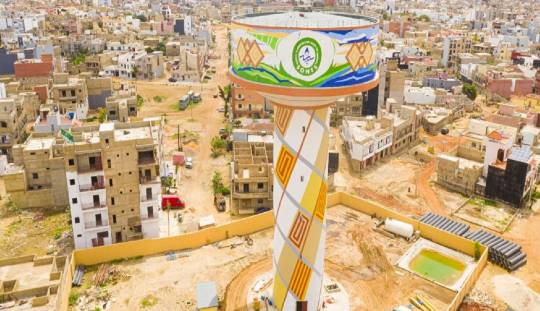
14 notes
·
View notes
Text
The spring meetings of the World Bank and International Monetary Fund have little of the drama of peace negotiations. They are often dominated by technical and technocratic questions concerning the intricacies of international finance. But for the poorest people in the world, the decisions made at these meetings are matters of life and death.
Since the 1990s, the World Bank has facilitated a dramatic decline in extreme poverty globally, from more than 1 in 3 people living in extreme poverty in 1990 to less than 1 in 10 today. But fragile and conflict-affected countries, such as the Democratic Republic of the Congo and Myanmar, have seen the opposite trend: In those places, extreme poverty is growing, and by 2030, they will be home to an estimated 59 percent of all people living in extreme poverty. The convergence of conflict, climate change, and economic shocks has left more than 300 million people dependent on humanitarian aid to survive.
This week’s meetings in Washington offer an opportunity for the World Bank to bridge this gap by revamping its approach to extreme poverty. This will require more imagination than we have historically seen from the development and humanitarian communities. But if the bank can break with traditional development frameworks and improve its reach, scale, and sustainability, it will be able to better support those who need it the most.
In stable states, development economics now has a playbook beyond the Washington Consensus, marked by free market principles and deregulation; international financial institutions now support sustainable and inclusive growth models. But in crisis-affected states, where effective humanitarian action is the first step on the road to development, the World Bank’s policy agenda is much less well developed.
The World Bank itself has recognized this. The bank’s new evolution road map, led by its president, Ajay Banga, recognizes the urgent need to focus on fragility, conflict, and climate change���among other global challenges—to achieve its mission to eradicate poverty on a livable planet. But it still needs a concrete plan.
Historically, the World Bank has relied on robust government partnerships. Yet as the landscape of poverty changes, it will need to adopt a more flexible approach. The bank should expand delivery of its services through nongovernmental partners, which can often better access communities in need. This is particularly important in crisis settings where a government may not be able to reach parts of the country.
For example, my organization, the International Rescue Committee (IRC), has successfully partnered with Gavi, the global organization that seeks to improve access to vaccines, alongside African-led civil society groups in Ethiopia, Somalia, South Sudan, and Sudan. As of February, our partnership has administered more than 1 million doses of lifesaving vaccines to children. Prior to the program, the IRC could access only 16 percent of targeted communities in the Horn of Africa. Now, we are able to reach 77 percent of those areas.
The World Bank also needs a plan to scale up its operations. This requires not just building up capacity but also reducing strains on national systems such as hospital networks, which are often stretched thin during a crisis. Humanitarian organizations such as the IRC have had success reducing acute malnutrition among children by partnering with community health workers to diagnose cases and administer treatment instead of adding to the caseload of hospitals.
It will be crucial for the bank to ensure that its programs can sustain any progress they make. This will require real, not rhetorical, localization: shifting power to local responders and building trust with them so that they can lead and deliver in aid efforts. One example of how localization can ensure that development efforts support a community’s long-term interests is the Building Resilient Communities in Somalia consortium. This program has collaborated with more than 450 communities over the past decade, and its work has been critical to avoiding famine.
Finally, the World Bank should launch a new model for its International Development Association (IDA), one of the largest sources of development finance for the world’s poorest countries. As the World Bank leadership and donors negotiate IDA replenishment this year, they should refine its finance mechanisms to be more responsive to countries’ risk, vulnerability, and accessibility to other sources of finance. For example, the IDA Crisis Response Window—which provides countries with additional resources to respond to climate, health, and economic shocks—could include better criteria to assess how fragility, conflict, and violence can compound these shocks.
More overall funding will be key to these efforts. In 2021, the last time the bank negotiated a financing package for the IDA, development partners agreed on a $93 billion package to support sustainable development in the world’s poorest countries. This year, donors should make even more ambitious pledging contributions that will put the IDA on track for tripling its size by 2030. Expanding nongovernmental partnerships will also help the bank improve disbursal and delivery of IDA funds.
The 1990s and 2000s saw one of the world’s great development success stories as hundreds of millions of people escaped extreme poverty. While the development and humanitarian communities agree on where the next success story needs to take place, that feat will not be built with the tools of the past. Luckily, we’ve already seen how humanitarian actors can drive scale, reach, and sustainability even in some of the most complex places in the world. That should be a guide for the World Bank as it seeks to chart its path for the future.
9 notes
·
View notes
Text
One country in the [climate-change] firing line is Cape Verde. The West African island nation, where 80% of the population lives on the coast, is already feeling the brunt of rising sea levels and increasing ocean acidity on its infrastructure, tourism, biodiversity and fisheries.
The country desperately needs to both mitigate and adapt to these problems, but – as with many Global South countries at present – simply lacks the budget to do it: Cape Verde’s debt reached an all-time high of 157% of GDP in 2021.
In a bid to address both issues simultaneously, the country has signed a novel agreement with Portugal to swap some of its debt for investments into an environmental and climate fund. The former Portuguese colony owes the Portuguese state €140m ($148m) and Portuguese banks €400m.
On a state visit to Cape Verde on 23 January, Portuguese Prime Minister António Costa announced the debt would be put towards Cape Verde’s energy transition and fight against climate change. Costa earmarked projects involving energy efficiency, renewable energy and green hydrogen as possible targets for the fund.
“This is a new seed that we sow in our future cooperation,” said Costa. “Climate change is a challenge that takes place on a global scale and no country will be sustainable if all countries are not sustainable.”
“Debt-for-climate swaps” allow countries to reduce their debt obligations in exchange for a commitment to finance domestic climate and nature projects with the freed-up financial resources. The concept has been knocking about since the 1980s, typically geared at nature conservation. However, after recent deals for Barbados, Belize and the Seychelles, and huge $800m and $1bn agreements in the offing for Ecuador and Sri Lanka, is this financial instrument finally coming of age?
How It Works
Debt-for-climate swaps typically follow a formula. First, a creditor [here, a group or government that money is owed to] agrees to reduce debt, either by converting it into local currency, lowering the interest rate, writing off some of the debt, or a combination of all three. The debtor will then use the saved money for initiatives aimed at increasing climate resilience, lowering greenhouse gas emissions or protecting biodiversity.
The original 'debt-for-nature swaps' began as small, trilateral deals, with NGOs buying sovereign debt owed to commercial banks to redirect payments towards nature projects. They have since evolved into larger, bilateral deals between creditors and debtors...
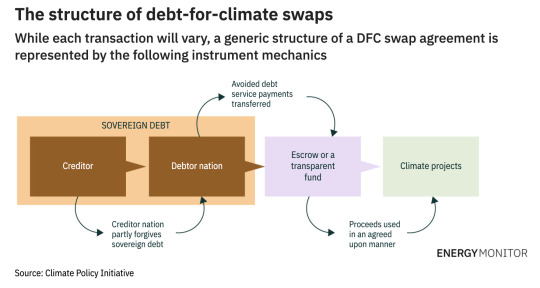
Debt-for-climate swaps free up fiscal resources so governments can improve resilience and transition to a low-carbon economy without causing a fiscal crisis or sacrificing spending on other development priorities. [These swaps] can create additional revenue for countries with valuable biodiversity or carbon sinks by allowing them to charge others to protect those assets, thereby providing a global public good.
Swaps can even result in an upgrade to a country’s sovereign credit rating, as was the case in Belize, which makes government borrowing cheaper [and improves the country's economy.]
Right now, these [swaps] are needed more than ever, with low-income countries dealing with multiple crises that have put huge pressure on public debt...
Debt-for-climate swaps: “Increasing in size and scale”
Although debt-for-climate swaps are not new, until recently the amount of finance raised globally from the instrument has been modest – just $1bn between 1987 and 2003, according to one OECD study. Just three of the 140 swaps over the past 35 years have had a value of more than $250m, according to the African Development Bank. The average size was a mere $26.6m.
However, the market has steadily picked up pace over the past two decades... In 2016, the government of the Seychelles signed a landmark agreement with developed nation creditor group the Paris Club, supported by NGO The Nature Conservancy (TNC), for a $22m investment in marine conservation.
The government of Belize followed suit in 2021 by issuing a $364m blue bond – a debt instrument to finance marine and ocean-focused sustainability projects – to buy back $550m of commercial debt to use for marine conservation and debt sustainability.
Then, last year, Barbados completed a $150m transaction, supported by the TNC and the Inter-American Development Bank, allowing the country to reduce its borrowing costs and use savings to finance marine conservation.
“Two or three years ago, we were talking about $50m deals,” says Widge. “Now they have gone to $250–300m, so they are definitely increasing in size and scale.”
Indeed, the success of the deals for the Seychelles, Belize and Barbados, along with the debt distress sweeping across the Global South, has sparked an uptick of interest in the model.
Ecuador is reported to be in negotiations with banks and a non-profit for an $800m deal, and Sri Lanka is discussing a $1bn transaction – which would be the biggest swap to date."
-via Energy Monitor, 2/1/23
Note: I'm leaving out my massive rant about how the vast majority of this debt is due to the damages of colonialism. And also countries being forced to "PAY BACK" COLONIZERS FOR THEIR OWN FREEDOM for decades or in some cases centuries (particularly infuriating example: Haiti). Debt-for-climate swaps are good news, and one way to help right this massive historic and ongoing economic wrong
#climate change#developing countries#economics#debt for climate#debt relief#cape verde#barbados#seychelles#ecuador#sri lanka#portugal#belize#global south#conservation#biodiversity#good news#hope#international politics
50 notes
·
View notes
Text
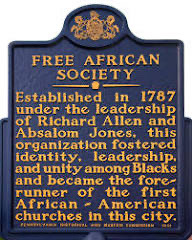
The Free African Society, founded on April 17, 1787, was a benevolent organization that held religious services and provided mutual aid for “free Africans and their descendants” in Philadelphia. The Society was founded by Richard Allen and Absalom Jones. It was the first African American religious institution in the city and led to the establishment of the first independent African American churches.
Founding members, all free African American men, included Samuel Baston, Joseph Johnson, Cato Freedman, Caesar Cranchell, James Potter, and William White. Notable members included abolitionists such as Cyrus Bustill, James Forten, and William Gray.
FAS developed as part of the rise in civic organizing following the American Revolutionary War. By 1790, the city had 2,000 free African American residents. In the first two decades after the war, inspired by revolutionary ideals, many slaveholders freed their enslaved, especially in the Upper South. Northern states abolished slavery. Numerous freedmen migrated to Philadelphia from rural areas of Pennsylvania and the South. Their numbers were increased by free people of color who were refugees from the Haitian Revolution in Saint-Domingue, as well as fugitive slaves escaping from the South.
Richard Allen, a Methodist preacher, and Absalom Jones rejected the second-class status African Americans were forced into at their white-dominated Methodist church. The church congregation had built a gallery where it asked them to sit separately. The men and their supporters wanted to create an independent group to meet African-American needs. They designed the FAS as a mutual aid society to help support widows and orphans, as well as the sick or unemployed. They supported the education of children or arranged apprenticeships if the children could not attend one of the free schools that were developed.
The FAS provided social and economic guidance and medical care. It helped new citizens establish their new sense of self-determination. While teaching thriftiness and how to save to build wealth, it became the model for banks in the African-American community. #africanhistory365 #africanexcellence
4 notes
·
View notes
Text
The plight of Kenya's jobless youth: A story of hope and despair.
By Emmanuel Okiru, 17 November 2023
Kenya is facing a serious challenge of youth unemployment, which affects millions of young people who are either out of work or stuck in low-quality and informal jobs. According to the World Bank, the youth unemployment rate in Kenya was 13.35 percent in 2022, among the highest in the world. The situation is worse in urban areas, where the youth unemployment rate was 19.1 percent in 2009, the latest year for which data is available.
The causes of youth unemployment are complex and multifaceted, ranging from a slow-growing economy, a mismatch between the skills of the labor force and the demands of the market, a lack of access to capital and credit, and a high population growth rate that outstrips the creation of new jobs. Moreover, the COVID-19 pandemic has exaggerated the problem, as many businesses have closed down or reduced their operations, leading to massive layoffs and income losses.
However, despite all these, there are also stories of hope and resilience among the Kenyan youth who are trying to overcome the barriers and create opportunities for themselves and others. Some of them have benefited from various initiatives and programs that aim to provide them with skills, training, mentorship and funding to start and grow their own businesses or find decent employment.
One such program is the Youth Enterprise Development Fund (YEDF), which was established by the government in 2006 to support youth entrepreneurship and innovation. The fund offers loans, grants and business development services to youth groups and individuals who have viable business ideas or existing enterprises. According to the fund's website, over 12 billion Kenyan shillings has been disbursed to more than 1.4 million youth since its inception.
One of the beneficiaries of the YEDF is Mary Wanjiku, a 24-year-old who runs a poultry farm in Kiambu County. She started her business in 2019 with 100 chicks, after receiving a loan of 50,000 shillings from the fund. She has since expanded her farm to 500 birds and sells eggs and chicken to local hotels and supermarkets. She has also employed two other young people to help her with the daily operations.
"I am very grateful to the YEDF for giving me this opportunity to start and grow my business. It has changed my life and given me a sense of purpose and dignity. I am able to support myself and my family, and also create jobs for other youth in my community," this is what she had to say in an interview with the Kenyan disclosure team.
This is just an example of how some Kenyan youth are coping with the challenge of unemployment and how some programs are trying to address it. However, there is still a lot that needs to be done to create more and better opportunities for the millions of young people who are still struggling to find their place in the society and the economy.
YEDF Testimonial video. Source: https://m.facebook.com/StateHouseKenya/videos/short-video-youth-enterprise-development-fund-yedf-beneficiaries/891250118940038/?locale=ms_MY
Photo gallery depicting the state of Unemployment in Kenya.
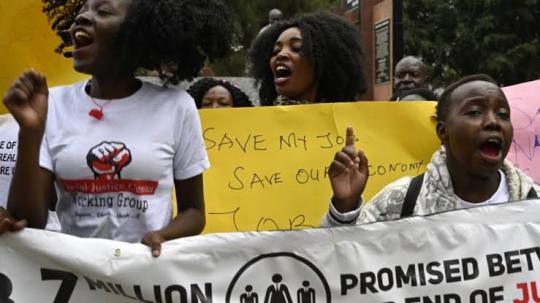
Kenyan youth protesting over increased unemployment. Source; Business Daily Newspaper, 2020.
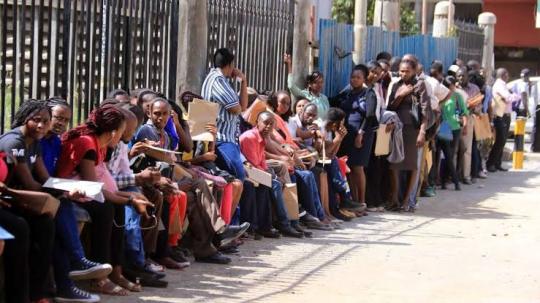
Jobseekers wait to hand in their documents during recruitment at County Hall in Nairobi
Source; Nation Media Group, 2019.
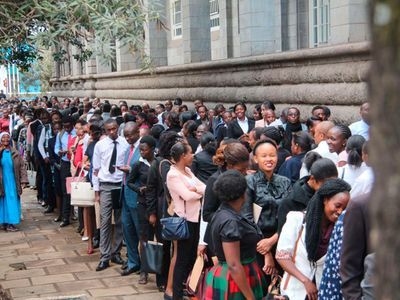
Job seekers queuing for interviews in Nairobi. Source; The East African Newspaper.
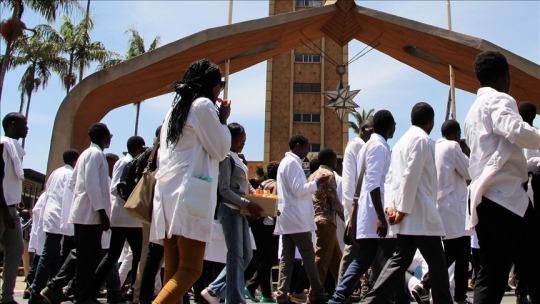
Kenyan doctors protest against unemployment. Source; https://www.aa.com.tr

Unemployment rate in Kenya over the years.
The graphs below give a clear depiction of Kenya's state of employment over the years;

Source: <a href='https://www.macrotrends.net/countries/KEN/kenya/unemployment-rate'>Source</a>

Unemployment rate in Kenya from Q3 2019 to Q4 2022. Source; https://www.statista.com/statistics/1134370/unemployment-rate-in-kenya/
2 notes
·
View notes
Photo
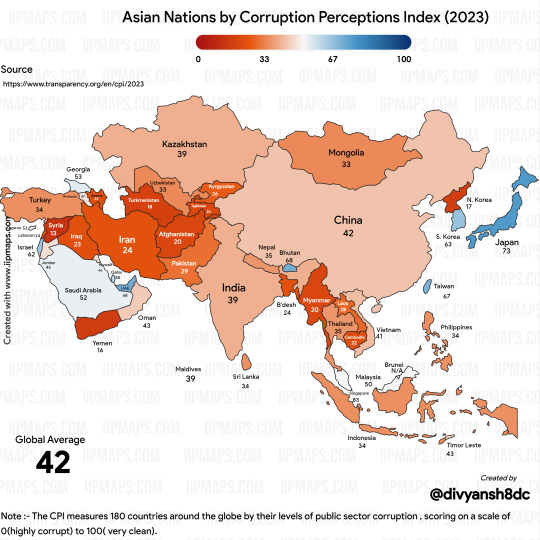
Asian Nations by Corruption Perceptions Index(2023)
by Specific_Ad_685
Note :- Corruption Perceptions Index is a report released annually by Transparency International for generally Public Sector and Public Institutions based corruption.
It measures corruption on a scale of 0 to 100 with 0 meaning highly corrupt(basically fully corrupt) and 100 meaning no corruption and fully clean.
The CPI is calculated using 13 different data sources from 12 different institutions that capture perceptions of corruption within the past two years.
13 data sources were used to construct the Corruption Perceptions Index (CPI)
2023:
African Development Bank Country Policy and Institutional Assessment 2021
Bertelsmann Stiftung Sustainable Governance Indicators 2022
Bertelsmann Stiftung Transformation Index 2024
Economist Intelligence Unit Country Risk Service 2023
Freedom House Nations in Transit 2023
Global Insight Country Risk Ratings 2022
IMD World Competitiveness Center World Competitiveness Yearbook Executive Opinion Survey 2023
Political and Economic Risk Consultancy Asian Intelligence 2023
The PRS Group International Country Risk Guide 2023
World Bank Country Policy and Institutional Assessment 2022
World Economic Forum Executive Opinion Survey 2023
World Justice Project Rule of Law Index Expert Survey 2023
Varieties of Democracy (V-Dem v. 13) 2023
68 notes
·
View notes
Text

Greetings Bernard Arnault,
Charmed Circle Services
If you refer to a group of people as a charmed circle, you mean that they seem to have special power or influence, and do not allow anyone else to join their group.
A protection racket is a type of racket and a scheme of organized crime perpetrated by a potentially hazardous organized crime group that generally guarantees protection outside the sanction of the law to another entity or individual from violence, robbery, ransacking, arson, vandalism, and other such threats, in exchange for payments.
Green Crime is illegal activity that involves the environment, biodiversity, or natural resources. There are generally five types of major environmental crime: illegal logging, fishing, and mining, and crimes that harm wildlife and generate pollution.
State-corporate crime is a concept in criminology for crimes that result from the relationship between the policies of the state and the policies and practices of commercial corporations.
Tax Haven Lobbying
State-corporate crime is a concept in criminology for crimes that result from the relationship between the policies of the state and the policies and practices of commercial corporations.
Organized transnational crime is organized criminal activity that takes place across national jurisdictions, and with advances in transportation and information technology, law enforcement officials and policymakers have needed to respond to this form of crime on a global scale.
Government Joint Venture
Example: Government Part Owned Coal & Diamond Mines
international corporation that specializes in coal & diamond mining, coal & diamond exploitation, coal & diamond retail, diamond trading and industrial coal & diamond manufacturing sectors.
Example: Debswana Diamond Company Limited Influenced
Debswana is a joint venture between the government of Botswana and the South African diamond company De Beers; each party owns 50 percent of the company
Ecological Preservation Company
Farmland Real Estate
Acquisition
Lease
Gross Margin
China Big Four Influence: Industrial and Commercial Banks, Construction Bank, & Agriculture Banks (Ag Banks)
Products
Finance and insurance, consumer banking, corporate banking, investment banking, investment management, global wealth management, private equity, mortgages, credit cards
Gross Margin Loan
In exchange for farmland development or startup give cash for gross margin %
LVMH Digital Wallet
Air Miles Credit Card
Client Card (Gift Card/Social Club)
Drop Shipping
Isolated Investment Platform/Newsletter
Distributors Type
Wholesale distributors provide that liaison, buying large quantities of products from manufacturers, storing them and then supplying them to retailers and other businesses.
Distributors
Distributors have a business relationship with manufactures and have partial ownership of the product they sell. Some distributors buy exclusive rights to buy a company's product to ensure that they are the sole distributor of that product in the area. Distributors often sell to wholesalers and retailers, creating minimal contact with the final buyers.
Indirect selling
Indirect selling is when a company uses an intermediary to distribute and sell its product. Indirect selling marketing channels can use varying amounts of intermediaries. In the most direct distribution route, the manufacturer can sell their product to an intermediary who then sells the product to a consumer. However, they may sometimes involve more than one intermediary in the distribution of a product.
This marketing channel encompasses many of the examples of intermediary channel uses, including shopping malls and chain retailers.
LVMH Distribution & Cash Conversion Cycle
Big Pharma Distribution Model
Wholesalers purchase drugs from manufacturers and distribute to a variety of customers, including independent, chain, or mail-order pharmacies, hospitals, long-term care, and other medical facilities.
Wholesale Distribution Clients
Drop Shipping
Malls
Modeling Agencies
Wedding Directors
Private Schools
Social Club
Art Auctions
Film Production Companies
Car Dealerships/Shows (Collaboration)
Jewelers (Gift Card Distribution for Store Credit)
Political Cabinet
Tennis Clubs (Dress Code)
Dinner Hall Rental Companies
Hair Salons (Gift Card Distribution for Store Credit)
Investment Banks (Gift Card Distribution for Store Credit)
Wholesale Client Requirement
Retailer Fair with Retail Advisory Groups Collaboration Business Incubator
Business incubator is an organization that helps startup companies and individual entrepreneurs to develop their businesses by providing a fullscale range of services starting with management training and office space and ending with venture capital financing.
What Can Companies Do To Improve Cash Conversion Cycle Times?
Invest in Real-Time Analytics.
Encourage Earlier Payments.
Speed Up the Delivery Time.
Make It Easier To Pay.
Simplify Your Invoices.
Rental and Recruitment
Graduation and Wedding Rentals allows for customer experience turning dreamers into clients
Wearing LVMH for the first time at Graduation is Emotionally Symbolic
Celebrations release the feel-good chemicals oxytocin, dopamine, and endorphins, which lower the stress hormone cortisol. This doesn't mean you simply are in a better mood, though your mood will improve. It also means you'll have clarity of thought and feel more in control.
Oxytocin is known as a social bonding hormone, unfortunately, though, it can also be the trigger to addiction.
Golf & Tennis Endorsement
Endorsement Wear Contracts (Product Placement Scheme)
This Bridges the LVMH Brand and Logo to Future Athletes where Nike isn't that Popular compare to other Nike endorsed athletes
Golf and Tennis are posh so the endorsements fit LVMH target audience
Rugby Kit Sponsor
Secure South African Athletes and Create a Larger Presence in South Africa (Natural Resources)
Athleisure Wear
Big and Tall Athleisure Clothing
Minimum Net Worth Condos with Luxury Strip Malls
Gift Card Program Drop Shipping : Promotion Program, Have a grace period for gift card top up (treat like a prepaid rewards credit card); Curated accessories promotional codes. Cash is acquired without product sold. (Starbucks with a twist)
Trade Shows: Promotional Model, This type of model books jobs that help sell or promote a certain commodity. Promotional models are often found at trade shows and other live events. As a whole, these models must be personable, outgoing, and have a strong knowledge of the product they are representing.
LVMH Inclusive (Minimum Spending) Social Club: Cross-functional Collaboration Based Shopping
Project
Cross collaborate through divisions to create a specific project. Projects are a curation of a series of products from multiple divisions. Goal is to have people attached to projects, not products. View Projects as Different Personalities. (Harvard Business Review)
Landscaping & Gardening Expos
Festive Activities for Consumers
Natural Resources Humid Subtropical Climate Farming with Security Operations (SecOps)
Material Sourcing
Porter's Model Pharma Industry
Porter's model can be applied to any segment of the economy to understand the level of competition within the industry and enhance a company's long-term profitability. The Five Forces model is named after Harvard Business School professor, Michael E. Porter.
Porter's 5 forces are:
Competition in the Industry
The first of the Five Forces refers to the number of competitors and their ability to undercut a company. The larger the number of competitors, along with the number of equivalent products and services they offer, the lesser the power of a company.
Suppliers and buyers seek out a company's competition if they are able to offer a better deal or lower prices. Conversely, when competitive rivalry is low, a company has greater power to charge higher prices and set the terms of deals to achieve higher sales and profits.
Potential of New Entrants Into an Industry
A company's power is also affected by the force of new entrants into its market. The less time and money it costs for a competitor to enter a company's market and be an effective competitor, the more an established company's position could be significantly weakened.
An industry with strong barriers to entry is ideal for existing companies within that industry since the company would be able to charge higher prices and negotiate better terms.
Power of Suppliers
The next factor in the Porter model addresses how easily suppliers can drive up the cost of inputs. It is affected by the number of suppliers of key inputs of a good or service, how unique these inputs are, and how much it would cost a company to switch to another supplier. The fewer suppliers to an industry, the more a company would depend on a supplier.
As a result, the supplier has more power and can drive up input costs and push for other advantages in trade. On the other hand, when there are many suppliers or low switching costs between rival suppliers, a company can keep its input costs lower and enhance its profits.
Power of Customers
The ability that customers have to drive prices lower or their level of power is one of the Five Forces. It is affected by how many buyers or customers a company has, how significant each customer is, and how much it would cost a company to find new customers or markets for its output.
A smaller and more powerful client base means that each customer has more power to negotiate for lower prices and better deals. A company that has many, smaller, independent customers will have an easier time charging higher prices to increase profitability
Threat of Substitutes
The last of the Five Forces focuses on substitutes. Substitute goods or services that can be used in place of a company's products or services pose a threat. Companies that produce goods or services for which there are no close substitutes will have more power to increase prices and lock in favorable terms. When close substitutes are available, customers will have the option to forgo buying a company's product, and a company's power can be weakened.
Understanding Porter's Five Forces and how they apply to an industry, can enable a company to adjust its business strategy to better use its resources to generate higher earnings for its investors.
What Are Porter's Five Forces Used for?
Porter's Five Forces Model helps managers and analysts understand the competitive landscape that a company faces and to understand how a company is positioned within it.
KEY TAKEAWAYS
Porter's Five Forces is a framework for analyzing a company's competitive environment.
Porter's Five Forces is a frequently used guideline for evaluating the competitive forces that influence a variety of business sectors.
It was created by Harvard Business School professor Michael E. Porter in 1979 and has since become an important tool for managers.
These forces include the number and power of a company's competitive rivals, potential new market entrants, suppliers, customers, and substitute products that influence a company's profitability.
Five Forces analysis can be used to guide business strategy to increase competitive advantage
Regards,
Adrian Blake-Trotman
10 notes
·
View notes
Text
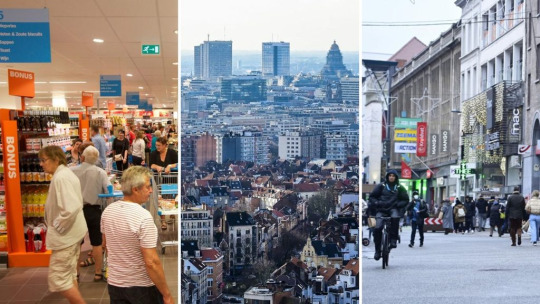
1. Automatic wage indexations 'main risk' to Belgium's economy, OECD claims
The Organisation for Economic Co-operation and Development (OECD) – a group of mostly rich countries – has condemned Belgium's system of government-mandated wage indexations, claiming that it poses one of the "main risks" to the country's economic outlook by potentially inducing "more persistent inflation". Read more.
2. A summer guide to Belgium's best festivals in 2023
From the end of May until mid-September, Belgium becomes music festival central. During these months, not a weekend goes by without a large-scale multi-day festival or intimate, unique music celebration taking place. Read more.
3. Belgian citizens asked to register before going on holiday
On the eve of the summer holidays, Belgium's Ministry of Foreign Affairs is encouraging citizens to better prepare for their trips and to register their time abroad. Read more.
4. Runners and walkers rejoice! Brussels to optimise pedestrian routes
With ever more people enjoying the ease of getting around Brussels on foot, running has become increasingly popular. To accommodate this growing trend the region is now looking to improve routes in the aim of removing any barrier to strolling or running in the city. Read more.
5. Federal Government proposes one-off €22,650 pension payment for three years' extra work
Belgium's Pensions Minister Karine Lalieux (PS) has proposed that people who continue to work beyond the age of early retirement should be awarded a one-off pension payment of up to €22,650. Read more.
6. Belfius first major bank to raise interest rates
Following weeks of reluctance, Belfius has become the first major bank in Belgium to raise the interest on its savings accounts: from 1 July, the interest on the regular savings account will increase from 0.50% to 0.90%. Read more.
7. Bouncers told not to let 'black and North African people' into Brussels nightclub
Recent testimonies given by a municipal councillor and a bouncer have shed light on the ongoing discrimination people of colour face in Belgian nightclubs, RTBF reports. Read more.
2 notes
·
View notes
Text
WaPo - Uganda reacts angrily to EU resolution slamming oil pipeline
Uganda’s leader warned Friday that his government could “find someone else to work with” as French partner TotalEnergies faced mounting pressure to pull out of a partnership to construct a pipeline opposed by climate activists.
The comments by Ugandan President Yoweri Museveni followed a resolution by the European Union’s Parliament urging the international community “to exert maximum pressure on Ugandan and Tanzanian authorities, as well as the project promoters and stakeholders,” to stop oil activities around Lake Albert.
That resolution cited human rights concerns centered around fair compensation for affected communities as well as environmental fears. More than 120,000 people will lose land to make way for the oil project, according to an evaluation by the environmental group Friends of the Earth.
The 897-mile (1,443-kilometer) East Africa Crude Oil Pipeline, planned by TotalEnergies and the China National Offshore Oil Corporation, is increasingly in trouble as activists, charging that it violates the spirit of the Paris climate accord, try to starve it of funds by petitioning banks and insurers.
But in Uganda, an East African country whose authorities see the pipeline as key to economic development, opposition to the project has sparked indignation. Ugandan authorities say oil wealth can lift millions out of poverty and that stopping the pipeline now would be detrimental to the country’s interests.
The national assembly issued a statement Thursday asserting Uganda’s sovereignty and condemning the EU parliament’s resolution.
Museveni said TotalEnergies had assured him that the pipeline — which would link oil fields in western Uganda to the Indian Ocean port of Tanga in Tanzania — would proceed but warned on Twitter that “if they choose to listen to the EU Parliament, we shall find someone else to work with.”
“Either way, we shall have our oil coming out by 2025 as planned. So the people of Uganda should not worry,” he said.
Uganda is estimated to have recoverable oil reserves of at least 1.4 billion barrels. The China National Offshore Oil Corporation and TotalEnergies said in February that the total investment would be more than $10 billion.
16 Sep 22
8 notes
·
View notes